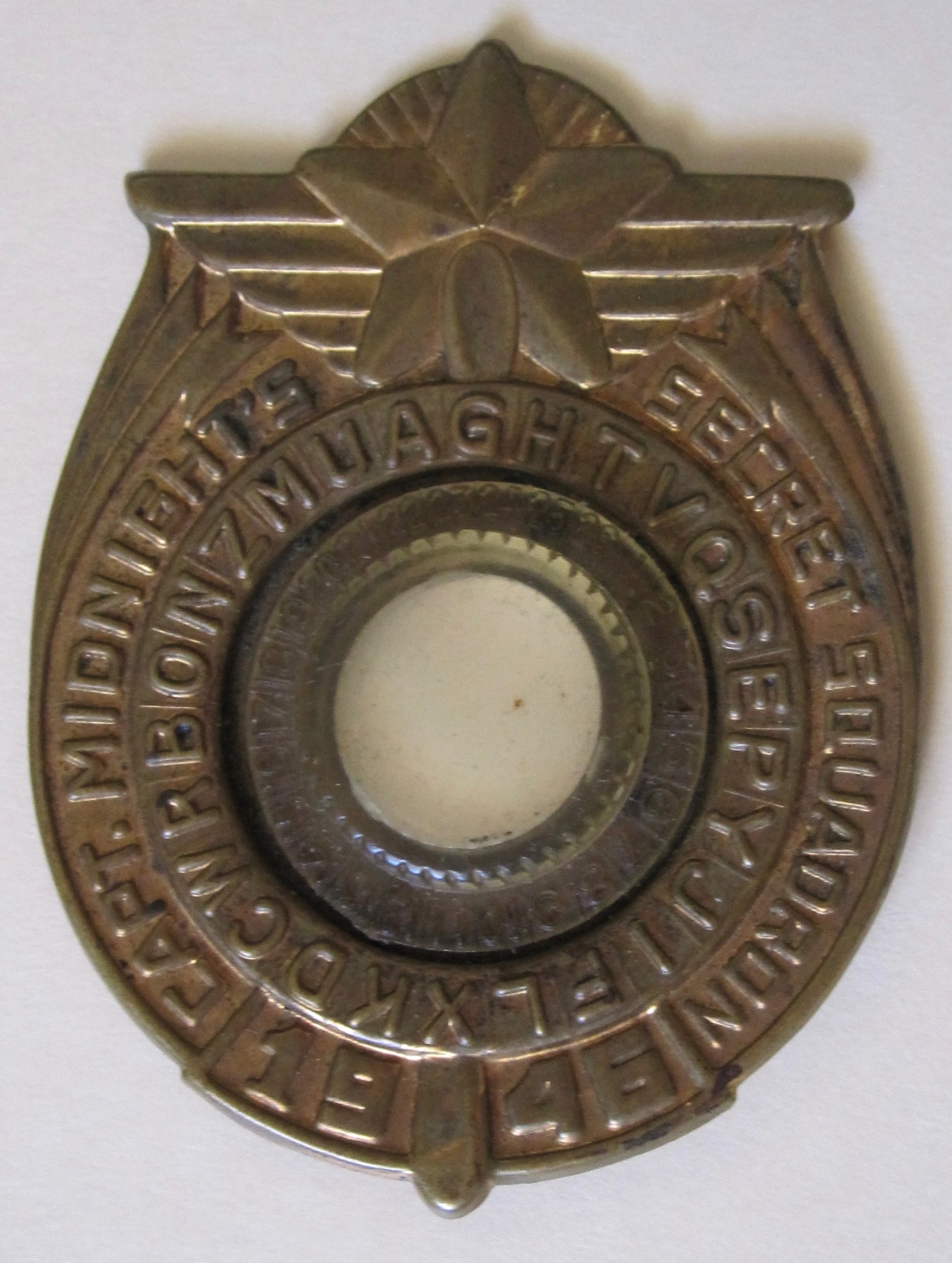Exercises 2.3 Exercises Set 1
Investigation Work
1.
Finish all investigations from in-class activities.
Computation Based Exercises
2.
Solve the cryptogram below. Warning: it may be a terrible pun.
HFRH VMQRP WOQTIZ SRP'H FGIT WRZOPC GJGEZHFOPC OP R IMV, APSIGRE JMOSG; OH'W FGE QAHHGEOPC OPWHOPSH.
HintThe pattern in HFRH is rare; what common word has that pattern? Apostrophes in SRP'H and OH'W. Single letter word R. Three words end with OPC; what's a really common three letter ending? And I=L.
3.
Solve the cryptogram below. Warning: it may be a terrible pun.
UCF JQGMNV VKX'U CKSF OFUKNMFO NXPAWIKUNAX KGAQU UCKU AMO US JAAVC. NU'T MKTTNF-PNFO IKUFWNKM.
HintTwo words with apostrophes: VKX'U and NU'T. Again the pattern of UCKU is rare. One of the two letter words is TV. Double letters in JAAVC. And M=L.
4.
Solve the cryptogram below.
CY B GFBXX UACON ABG UAM HWKMT UW FBSM LWR BONTL VWMG UABU OWU COVCDBUM GWFMUACON BZWRU LWRT GCJM
5.
Solve the cryptogram below.
KLNDPQPRYKLNU IAQUKNPQ KVFK QPFV VFG KP RFCY AZY PI HVNMY VY HFZ WANMGNQD VNZ WND WPFK: KVY FLU-KFQDYQK
6.
Solve the cryptogram below.
EDRC SDRW BZZRURH SDR ZRPPBE K UBPR EFSD KJSURTT HFKN, DR TKFH “NRUB JDKCJR. F'L JKLRUBC TDW.”
7.
Encrypt the message GOAT with a 13-shift.8.
Let's examine shift ciphers.
Pick a word and encipher it using a 6-shift and using a 20-shift.
Take the 6-shift enciphered name and encipher it using the 20 shift. Explain the result.
Explain your result in b) using modular arithmetic. I.e., what formulas correspond to a 6-shift and a 20-shift? What happens in modular arithmetic when you combine them?
9.
Solve the following shift ciphers. Word breaks are preserved in the first 2, but not in the last two. In the last two, the letters are grouped in blocks of five (following tradition and convenience) but these blocks have nothing to do with word length.
YK PQMD OMF XAHQE JFDM HUFMYUZE UZFQZEQXK
TY VDS HAL TF TLAHS DVYT
ADEMB UTWUY IFEMU H
IUZWU EOYHK OAZEJ EIIKN PWHEP U
Bonus: what is interesting or significant about each of the decrypted phrases above?
10.
The first episode of Sesame Street aired on Monday November 10, 1969.
What other dates in November of 1969 fell on a Monday? What's the connection to modular arithmetic?
Reduce 365 mod 7. What day of the week did November 10 fall on in 1970, 1971, and 1972? How does this relate to reducing 365 mod 7? If Sesame Street continues, on what day of the week will it celebrate its 100th birthday? Hint: remember that a year is a leap year if it is divisible by 4, but not 100, unless it is also divisible by 400.
11.
For each statement below, determine if it is true or false.
If \(x=1\) then \(x+1 \equiv 14 \pmod{12}\text{.}\)
If \(x=5\) then \(x+3 \equiv 19 \pmod{12}\text{.}\)
If \(x=29\) then \(x+2 \equiv 12 \pmod{20}\text{.}\)
If \(x=19\) then \(x \equiv -1 \pmod{20}\text{.}\)
If \(x+2 \equiv 12 \pmod{20}\) then \(x=10\) is the only solution.
12.
Make a list of the three smallest positive solutions and the three largest negative solutions to each of the following congruences:
\(x-8 \equiv 10\) (mod 15)
\(x+8 \equiv 10\) (mod 15)
13.
In each of the following, use the division algorithm to divide \(b\) by \(n\) and find the quotient \(q\) and remainder \(r\text{.}\) Remember that \(0 \leq r \lt n\text{.}\)
\(\displaystyle b=20, n=6\)
\(\displaystyle b=6, n=20\)
14.
In each of the following, use the division algorithm to divide \(b\) by \(n\) and find the quotient \(q\) and remainder \(r\text{.}\) Remember that \(0 \leq r \lt n\text{.}\)
\(\displaystyle b=103, n=11\)
\(\displaystyle b=44, n=7\)
\(\displaystyle b=-44, n=7\)
\(\displaystyle b=1012, n=13\)
Writing Based Exercises
15.
Tell me a little bit about yourself with the questions below.
What are you (thinking of) majoring in and why?
What math courses have you taken so far at Redlands or another College or University?
Why are you taking this course? What do you hope to learn in it?
Construct a metaphor for mathematics (as you see it). For example, if math were an animal what would it be? Explain why you chose your metaphor.
What does it mean to make a mathematical conjecture?
On a rating scale of 1 to 5, rate how confident you feel in being able to make a mathematical conjecture. (With 1 being a low confidence and 5 being a high confidence).
What does it mean to prove a mathematical statement?
On a rating scale of 1 to 5, rate how confident you feel in being able to prove a mathematical statement. (With 1 being low confidence and 5 being high confidence).
How do you think mathematicians discover new results?
Please tell me anything you think I should know about you, anything you'd like to tell me about yourself, or any questions you have for me.
16.
Explain why definition 3 of modular arithmetic implies definition 4. That is, explain why if \(a=b+nk\) then \(a-b=nk\text{.}\)
17.
Explain why definition 4 of modular arithmetic implies definition 3. That is, explain why if \(a-b=nk\) then \(a=b+nk\text{.}\)
18.
Show that if \(a=b+nk\) then \((a+c)=(b+c)+nk\text{.}\) Explain what this tells you about modular arithmetic.
Enrichment Opportunities
19.
Read Edgar Allen Poe's story involving a cipher and write a short paragraph about what you found interesting about the story and what you learned about code breaking from reading it. http://www.easylit.com/poe/comtext/prose/goldbug.shtml
